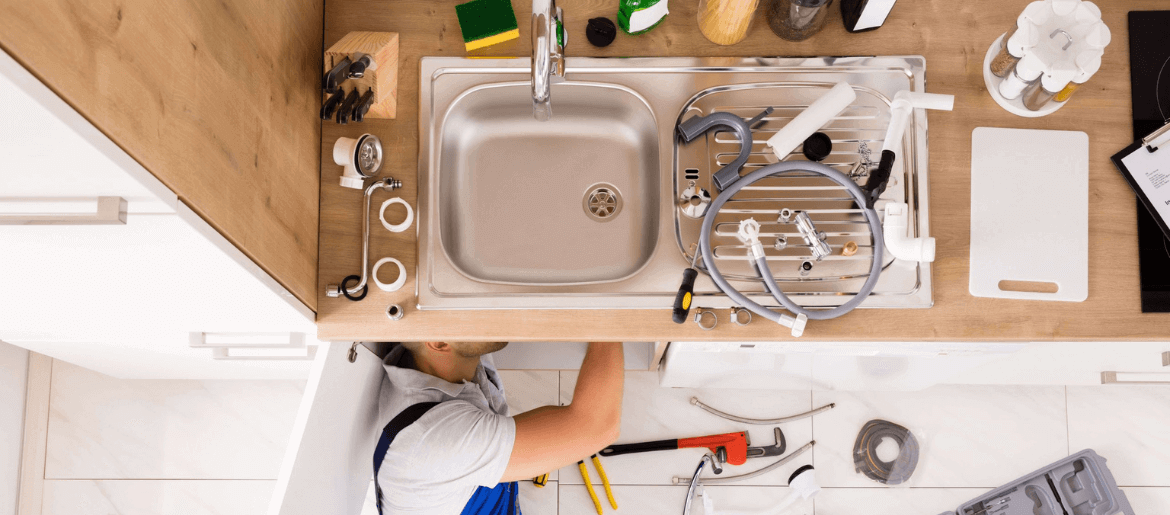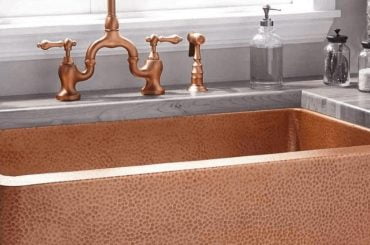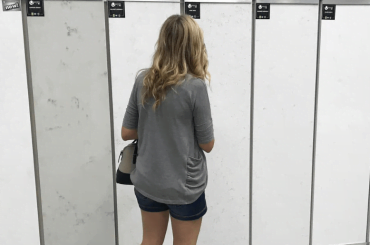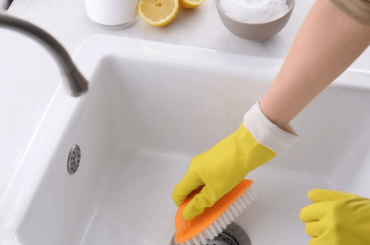Installing a double kitchen sink is a great way to increase the amount of counter space in your kitchen. It can also be a great way to improve the function and appearance of your kitchen.
This post will teach you how to install a double kitchen sink plumbing system. Whether you are replacing an old sink or installing a brand-new one, these instructions will help make the process simple. So without further ado, let’s get started!
How to install double kitchen Sink plumbing?
Follow these simple steps to install double kitchen sink plumbing:
- Start by shutting off the water to your home at the main shutoff valve.
- Next, remove the old sink and clean out any debris from the base cabinet.
- Introduce the new sink as indicated by the producer’s guidelines.
- Connect the hot and cold supply lines to the appropriate valves under the sink.
- Turn on the water and check for leaks.
- Install the drain assembly according to the manufacturer’s instructions.
- Finally, install the faucet and any additional accessories according to the manufacturer’s instructions.
How to remove the old sink?
The process of removing the old one is quite simple. In most cases, all you’ll need is a screwdriver.
- First, locate the screws that are holding the sink in place. In most cases, there will be two screws on each side of the sink.
- Use a screwdriver to remove these screws and then lift the sink out of its countertop cutout. If your sink is held in place with clips instead of screws, use a flathead screwdriver to pry the clips off of the countertop.
- Once the sink is removed, take a look at the underside to see how it was mounted. In most cases, you’ll see a few screws holding the faucet in place. Use a screwdriver to remove these screws and take the faucet off of the sink.
- With the sink and faucet removed, you should now have access to the P-trap. Use a wrench to loosen the slip nuts that secure the P-trap to the drain lines. Once these are loose, you can remove the P-trap and dispose of it properly.
- Take a look at the drain lines leading into and out of the now-removed P-trap. If these lines are made of metal, use a hacksaw to cut them so that they can be removed from the trap assembly. If the lines are made of PVC, they can simply be unscrewed.
- With the drain lines removed, you should now have clear access to the trap assembly. Use a wrench to remove the slip nuts that secure it to the drain line leading into the wall and then remove the entire assembly.
- Once the old sink is completely removed, you can begin installing the new one.
How to install the new sink?
- Before you start, make sure you have all the tools and materials you need. You will need a new sink, a drill, a screwdriver, pliers and a hammer.
- Start by turning off the water supply to your sink. Then, use a screwdriver to remove the faucet handles. Next, use a wrench to loosen the nuts that secure the supply lines to the sink. Finally, lift out the old sink.
- Use a brush and some cleaner to remove any dirt or grime that has built up under the old sink.
- Install the new sink. Start by placing the new sink in the hole. Then, use the screws that come with the sink to secure it in place. Next, attach the supply lines to the new sink. Finally, screw on the faucet handles.
- Turn on the water supply and test your new sink. Run the water for a few minutes to make sure everything is working properly. That’s it! You’ve now successfully installed a new sink in your kitchen.
How to seal the sink?
- You need to clean the sink before you can seal it. Use mild soap and water to clean the sink or you can use a commercial cleaner specifically designed for stainless steel.
- Once the sink is clean, dry it off with a soft cloth.
- Apply a thin layer of sealant to the sink with a clean cloth. Be sure to apply the sealant evenly over the entire surface of the sink.
- Allow the sealant to dry completely before using the sink again. Follow the manufacturer’s instructions on how long to wait before using the sink again. typically, you will need to wait 24 hours for the sealant to cure completely.
- Enjoy your newly sealed stainless steel sink!
Tips and tricks for a successful installation
- First, make sure that you have the correct sink size. A double kitchen sink is typically wider than a single sink, so you will need to make sure that your cabinets can accommodate the extra width.
- Second, when installing the sink, be sure to use plumbers’ putty around the drain area to create a watertight seal.
- Third, attach the drain stopper to the sink before connecting the P-trap (the curved portion of the pipe that connects to the drain) to ensure a proper fit.
- Fourth when attaching the P-trap to the drainage system, be sure to use tape or another type of sealant at all joints to prevent leaks.
- Finally, test your new double kitchen sink plumbing by running water through both sides of the sink to check for leaks.
Following these tips will help you ensure a successful double kitchen sink plumbing installation.
If you have any questions or concerns, be sure to consult with a professional plumber for assistance.
FAQs – Install Double Kitchen Sink
Does a double sink need 2 traps?
No, a double sink only needs one trap. The second sink will usually have a clean-out tee installed in the drain line to allow for easy cleaning of the line if it becomes blocked.
How do you connect a drain pipe under a kitchen sink?
There are several ways to connect a drain pipe under a kitchen sink, but the most common way is to use a P-trap. To install a P-trap.
- First, remove the drain stopper from the sink. Then, place the P-trap over the drain opening and use plumbers’ putty to seal the connection between the trap and the sink.
- Next, connect the trap to the drain line using a slip joint connector.
- Finally, replace the drain stopper and turn on the water to test the connection.
Can 2 sinks share the same water line?
Two sinks can share the same water line. However, it is not recommended as it can lead to cross-contamination of the water.
Additionally, it can be difficult to keep the water lines clean if they are shared. If you do choose to share a water line, be sure to clean it regularly.
Does a double sink need a vent?
Yes, all double-sink drain systems need a vent to work properly. The air vent prevents a vacuum from forming in the drain line, which could cause the water in the sinks to be drawn down and create a clog.
The vent also allows air to enter the drain line, which is necessary for the proper drainage of water. Without a vent, the drain line would become clogged and water would back up into the sinks.
So, to avoid these problems, all double-sink drain systems must have a vent.
Can you change a single sink to a double sink?
It is possible to convert a single sink to a double sink, but it is not a simple task. You will need to hire a professional plumber to do the job.
The first thing that needs to be done is to install a new drain line for the second sink.
This drain line will need to be vented properly. Once the new drain line is installed, the plumbing for the second sink can be connected. The new sink will need its water supply line as well.
If you are planning on converting a single sink to a double sink, it is best to consult with a professional plumber beforehand to ensure that the job is done correctly.
How much does it cost to install a double kitchen sink?
The cost of installing a double kitchen sink will vary depending on several factors, including the type of sink you choose, the materials needed, the complexity of the installation and whether or not you hire a professional to do the job.
On average, you can expect to pay between $200 and $900 to install a double kitchen sink. If you hire a professional to do the job, the cost will be on the higher end of the spectrum.
Conclusion:
These are the steps you need to follow to install your double kitchen sink. You need to be careful while following these instructions and make sure that you do not damage any of the pipes.
With a little bit of effort, you can easily install your double kitchen sink plumbing without having to call a professional.
Just be sure to follow these simple steps and you’ll have your new sink up and running in no time. Thanks for reading!





